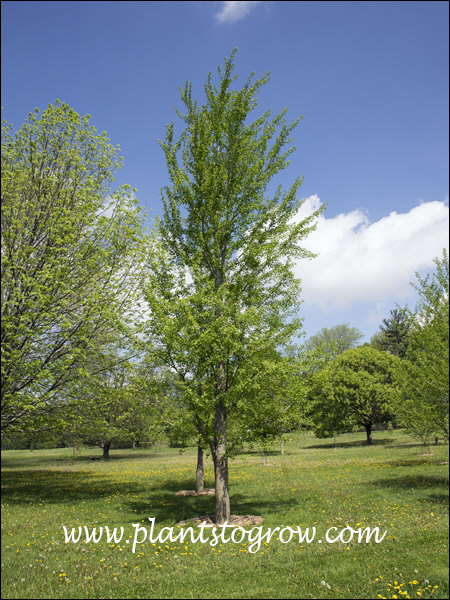| Description | A large upright pyramidal tree. |
|---|---|
| Pronunciation | (GINK-go)(bi-LO-baa) |
| Plant Type | All Plants, Trees Deciduous |
| Hardiness Zone | 4-8 |
| Sunlight | full |
| Moisture | average |
| Soil & Site | average |
| Growing Media | #1-Manual of Woody Landscape Plants (Michael Dirr), #75-Encyclopedia of Nuts, Berries and Seeds (John Heinerman), #93-North American Landscape Trees (Arthur Lee Jacobson) |
| Flowers | a male selection, doesn't produce the undesirable fruit |
| Fruit | The fruit is produced on female trees and it is messy and malodorous. Starts producing seeds at about 20 years. The seeds are popular in some oriental cuisine and used as a medicine. |
| Leaves | simple, alternate, leathery, found in clusters on spurs, fan shaped, dichotomous veined, incised at the broad fan tip and dark green, reported to have poor fall color |
| Dimensions | The original tree is 55 feet tall by a spread of 20 feet, upright pyramidal |
| Propagation | from a male grafted tree |
| Native Site | Species native to China. |
| Cultivar Origin | 1962, Saratoga Horticultural Foundation, from a tree in Fairmont Park, Pennsylvannia |
| Misc Facts | The Ginkgo is the lone remaining species in an ancient group of plants, thriving during the time of the dinosaurs. If mother nature had her way the Ginkgo would be just about extinct. They where planted in Kaifeng, the capitol city of the Sung dynasty and under cultivation Ginkgo avoided the natural process of evolution. A few wild plants existed as late as 1933 in China. |
| Notes & Reference | #01-Manual of Woody Landscape Plants (Michael Dirr), #75-Encyclopedia of Nuts, Berries and Seeds (John Heinerman), #93-North American Landscape Trees (Arthur Lee Jacobson) |

Cart

